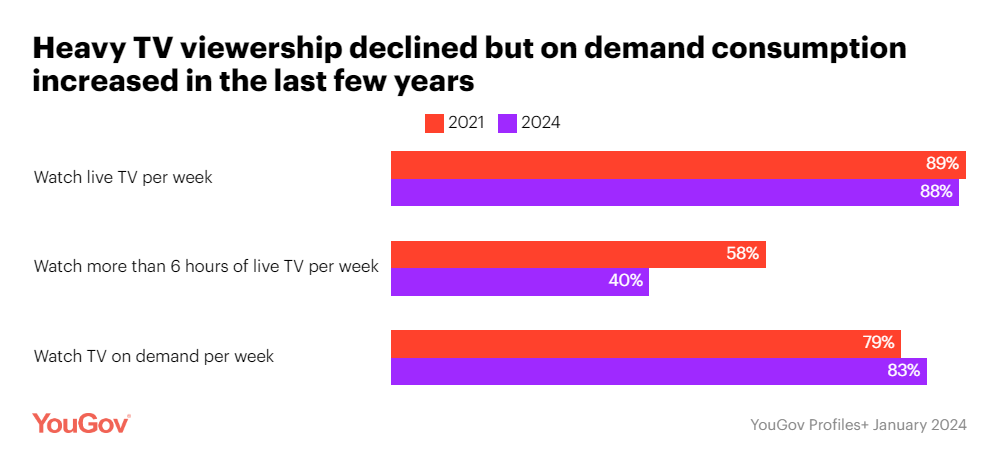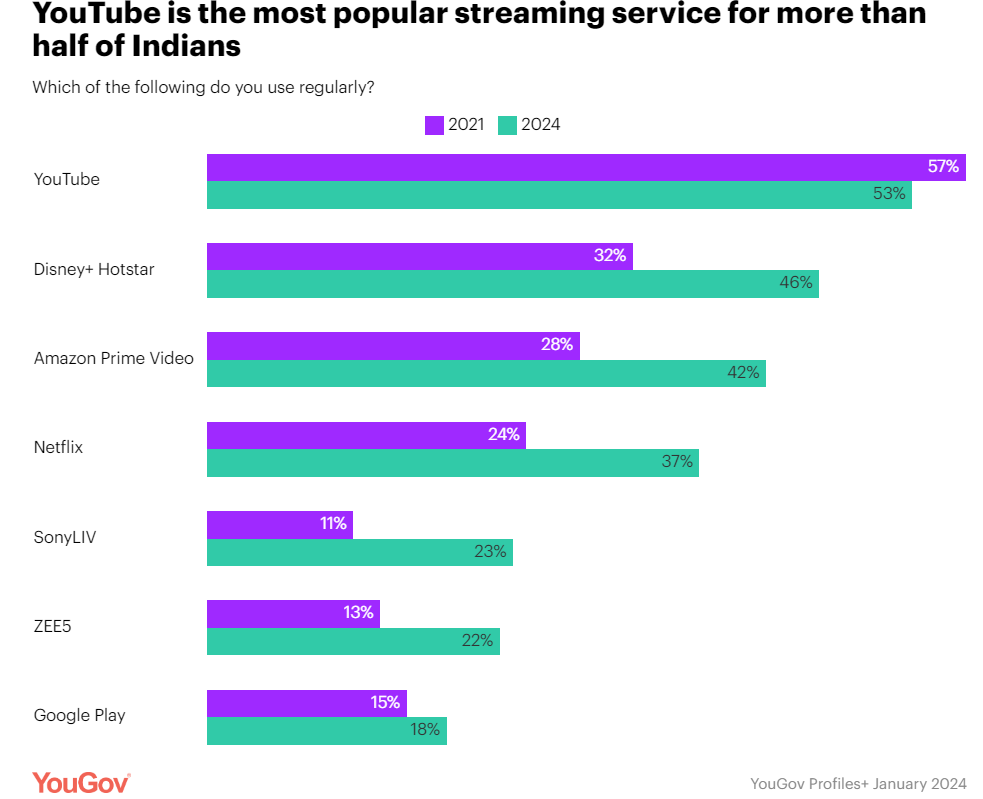Latest data from YouGov’s media report titled ‘The 2024 Media morph’ revealed that heavy TV viewing seems to have declined among urban Indians.
Although almost nine in ten people watch live TV but heavy viewership (6+ hours a week) has declined over the past three years. On the other hand, watching TV via a video on demand streaming service increased to 83% in 2024 from 79% in 2021.
Leveraging its audience segmentation tool, YouGov Profiles, this report explores shifts in media habits of urban Indians over the last five years and details the adoption of online media.
Despite a small drop, YouTube is the most popular streaming service for more than half of urban Indians. On the other hand, Disney+ Hotstar, Amazon Prime Video and Netflix have had the largest increase in popularity.
Amongst the various generations, YouTube dominates Genz’s choice. 57% GenZ use YouTube to watch videos on demand, this has grown from 49% who were doing so in 2021.

Disney+ Hotstar is the next widely used platform among GenZ (41%), followed by Amazon Prime Video (35%)- which has seen the largest growth in usage in the last few years.
A glance at the listening behaviour of urban Indians shows that listening to streamed music has remained relatively stable over the years. In the area of podcasts, younger demographics are more actively engaged as compared to others.

Seven in ten GenZ respondents said they listen to podcasts each week (71%), as compared to two-thirds of the overall urban Indians population (67%).
Spotify is the most popular podcast service in India (at 41%), followed by Google podcast (21%) and Audible (16%). Spotify is notably popular among the GenZ and has witnessed a growth of 11% in the last two years, from 33% in 2022 to 44% in 2024.
When it comes to podcast genres, music is the top genre among GenZ (at 43%), followed by comedy (35%) and TV & movies (30%).
Methodology: YouGov Profiles is based on continuously collected data and rolling surveys, rather than from a single limited questionnaire. Profiles data for India is representative of the adult online population (18 years or older), and weighted by gender, age, region and monthly household income. For this report, data was collected in January 2024, using a minimum base size of N=3500.

